Welcome to the world of sustainable container gardening, where your green thumb meets eco-conscious practices. Gardening isn’t just about plants; it’s about fostering a connection with nature and making a positive impact on the environment. In this blog post, we’ll explore “Green Gardening for Eco-Warriors: Sustainable Container Gardening Tips.” Whether you’re a seasoned gardener or just starting, join us on this journey to create an eco-friendly, thriving container garden.
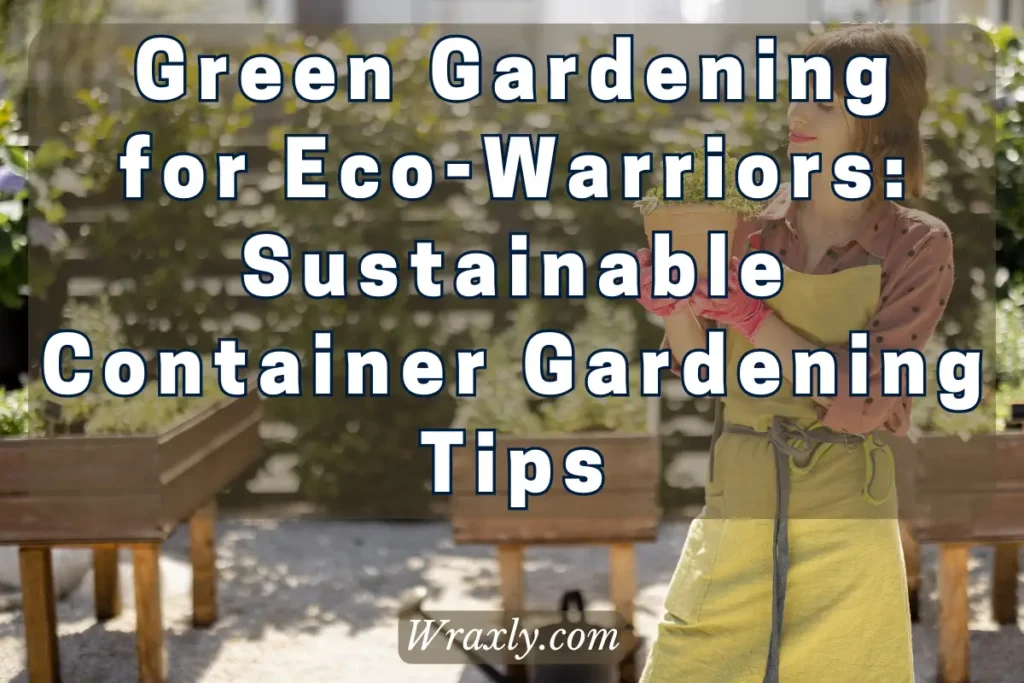
Choosing Sustainable Containers
When it comes to sustainable container gardening, the journey starts with your choice of containers. These vessels hold the key to a greener garden, and your selections can make a significant difference in reducing your environmental footprint.
Embrace eco-friendly materials in your container choices. Look for options like recycled containers, which give new life to old materials while minimizing waste. Wooden crates and clay pots are timeless choices that not only have a natural aesthetic appeal but are also biodegradable, ensuring they won’t clutter landfills at the end of their lifespan.
Consider the art of repurposing as well. Old buckets, tin cans, or even discarded furniture can be transformed into unique and sustainable containers. These choices not only showcase your creativity but also contribute to a more eco-conscious approach to gardening.
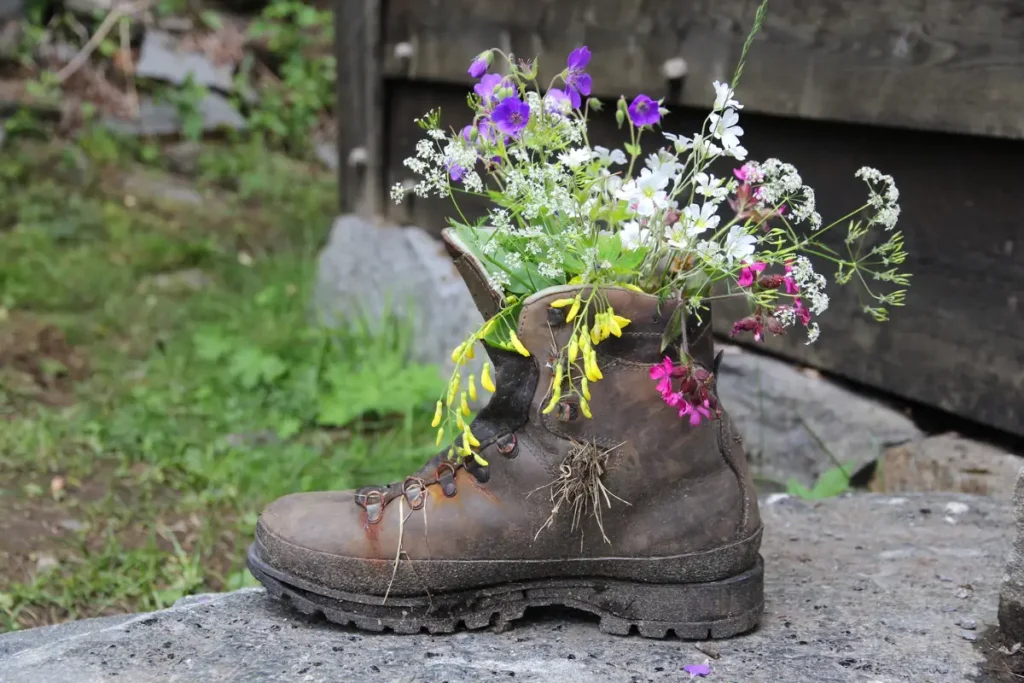
In the world of sustainable container gardening, your choices matter. By selecting containers that align with your commitment to the environment, you set the stage for a garden that not only flourishes but also leaves a positive impact on the planet.
Selecting the Right Plants
Once you’ve chosen your sustainable containers, it’s time to turn your attention to the stars of your container garden: the plants. When aiming for eco-friendliness, your plant choices can have a profound impact on the overall sustainability of your garden. See also: Eco-Friendly Seedlings: Embrace Biodegradable Pots for Sustainable Growth
Emphasize native and drought-resistant plants in your selection. These species are well-adapted to your local climate, requiring less water and maintenance. By choosing them, you conserve precious resources and support local biodiversity.
Consider the practice of companion planting. This strategy involves placing plants together that benefit each other, such as planting basil near tomatoes to deter pests. Not only does companion planting promote healthier plants, but it also reduces the need for chemical pesticides.
Furthermore, be mindful of choosing plants that thrive in containers. Some varieties are better suited for confined spaces and will reward you with lush growth and bountiful harvests. As you select your plants, envision a vibrant and harmonious garden where sustainability is rooted in every leaf and petal.
Soil and Fertilizer Choices
To cultivate a thriving and eco-conscious container garden, the soil you use and the fertilizers you apply play a pivotal role. Let’s dig into the details of making sustainable choices in this crucial aspect of gardening.
First and foremost, prioritize organic soil and compost. These natural alternatives enhance soil fertility, promote healthy root growth, and improve water retention. Organic soil is free from synthetic chemicals, ensuring a safe and environmentally-friendly foundation for your plants.
When creating your potting mix, aim for balance. A well-blended potting mix that combines organic matter, such as compost, with materials like peat moss and perlite provides optimal aeration and water-holding capacity. This balance supports plant growth while conserving water and nutrients.
In the realm of fertilizers, opt for natural options. Organic fertilizers derived from sources like compost, bone meal, or fish emulsion enrich the soil without the environmental drawbacks associated with synthetic chemicals. They release nutrients slowly, reducing the risk of over-fertilization and nutrient runoff, which can harm nearby ecosystems.
By focusing on organic soil and natural fertilizers, you not only create an environment where your plants thrive but also contribute to a healthier, more sustainable world. It’s a small step that leads to significant benefits for your garden and the planet.
Recommended Organic Fertilizer
| Image | Title | Prime | Buy |
|---|---|---|---|
 | Neptune's Harvest Organic Hydrolized Fish & Seaweed Fertilizer 36 0z | PrimeEligible | Check My Price on Amazon |
Top | Alaska Fish Emulsion Fertilizer 5-1-1 Concentrate 1 Gallon (Packaging may vary) | PrimeEligible | Check My Price on Amazon |
 | FoxFarm Liquid Nutrient Trio Soil Formula: Big Bloom, Grow Big, Tiger Bloom (Pack of 3-16 oz Bottles) + Twin Canaries Chart | PrimeEligible | Check My Price on Amazon |
 | Miracle-Gro Performance Organics All Purpose Plant Nutrition, 1 lb. - All Natural Plant Food For Vegetables, Flowers and Herbs - Apply Every 7 Days For Best Results - Feeds up to 200 sq. ft. | PrimeEligible | Check My Price on Amazon |
 | Wiggle Worm 100% Pure Organic Worm Castings 15 Pounds - Organic Fertilizer for Houseplants, Vegetables, and More – OMRI-Listed Earthworm Castings to Help Improve Soil Fertility and Aeration | Prime | Check My Price on Amazon |
 | Liqui-Dirt Nano Powder All-Purpose Organic Complete Plant Food -18 Balanced Super Foods Blend of Vitamins Minerals Micro-Fungi and Bio-Organisms (50 Gallons) | PrimeEligible | Check My Price on Amazon |
 | Omri Listed Fish & Kelp Fertilizer by GS Plant Foods (1 Gallon) - Organic Fertilizer for Vegetables, Trees, Lawns, Shrubs, Flowers, Seeds & Plants - Hydrolyzed Fish and Seaweed Blend | PrimeEligible | Check My Price on Amazon |
Watering Wisely
Water is a precious resource, and in sustainable container gardening, it’s essential to use it wisely. Let’s explore smart watering practices that not only conserve water but also promote the health of your plants.
Efficient Watering Practices
- Water deeply but less frequently to encourage deep root growth and reduce evaporation.
- Use a soaker hose or drip irrigation system to deliver water directly to the root zone, minimizing wastage.
- Water in the morning or late afternoon when temperatures are cooler to reduce water loss through evaporation.
Self-Watering Containers
- Consider using self-watering containers that have a built-in reservoir. These containers provide a consistent water supply to your plants, reducing the need for frequent watering.
- Self-watering containers are especially beneficial for busy gardeners and for maintaining consistent moisture levels in your garden. See also: Wicking Water Systems
Rainwater Harvesting
- Collect rainwater in barrels or other containers to use for watering your container garden. Rainwater is free from chlorine and other chemicals found in tap water.
- Implement a rain barrel system to make the most of rainy days and reduce your reliance on municipal water sources.
By implementing these water-saving techniques, you not only conserve a precious resource but also create a sustainable container garden that thrives with minimal environmental impact. Your eco-conscious approach to watering will benefit both your garden and the planet.
Recommended Drip Irrigation Systems
| Image | Title | Prime | Buy |
|---|---|---|---|
 | Drip Irrigation Kit,165FT 190 Pcs Garden Irrigation System 1/4" 1/2” Blank Distribution Tubing Watering Drip Kit Automatic Irrigation Equipment for Garden Greenhouse, Flower Bed,Patio,Lawn | PrimeEligible | Check My Price on Amazon |
Top | MIXC 226FT Greenhouse Micro Drip Irrigation Kit Automatic Irrigation System Patio Misting Plant Watering System with 1/4 inch 1/2 inch Blank Distribution Tubing Hose Adjustable Nozzle Emitters Sprinkler Barbed Fittings | PrimeEligible | Check My Price on Amazon |
 | Drip Irrigation Kit, 43m/141ft Garden Watering System with Quick Adapter 1/4 Distribution Tubing Hose Adjustable Nozzle Water Sprinkler No Leaking Automatic Irrigation System Misting for Greenhouse | PrimeEligible | Check My Price on Amazon |
 | 240FT Drip Irrigation System Kit, Yomile Automatic Garden Watering Misting System with 1/2 inch Hose 1/4 inch Distribution Tubing Drip Emitters Drip Spray 2 in 1 Nozzle for Greenhouse, Yard, Lawn | PrimeEligible | Check My Price on Amazon |
 | 201Pieces 164FT Drip Irrigation Kit - Cokacot Watering System Misting System with Thicken Tubing & Adjustable Dripper Emitters & T Tube Connector & Fixed Stems for Garden Yard Lawn Patio Plants Flower Bed | PrimeEligible | Check My Price on Amazon |
 | CARPATHEN Drip Irrigation System - Adjustable Premium Garden Watering System for Raised Garden Bed, Yard, Lawn, Greenhouse - Complete Drip Irrigation Kit with Drip Emitters, 1/4 Tubing and Connectors | PrimeEligible | Check My Price on Amazon |
 | HIRALIY 98.4FT Drip Irrigation Kit, Garden Watering System, 6x4mm Blank Distribution Tubing DIY Automatic Irrigation Equipment Set for Outdoor Plants, Micro Drip Irrigation Kit for Greenhouse Flower, Bed Patio, Lawn | PrimeEligible | Check My Price on Amazon |
Pest and Disease Management
Maintaining a sustainable container garden involves safeguarding your plants from pests and diseases while minimizing harm to the environment. Let’s explore natural and eco-friendly methods for managing these challenges.
Natural Pest Control Methods
- Encourage beneficial insects like ladybugs and lacewings, which prey on garden pests like aphids and mites.
- Use neem oil or insecticidal soap to control common pests while minimizing harm to beneficial insects and pollinators.
- Introduce companion plants like marigolds and nasturtiums, which deter many garden pests.
Companion Planting for Pest Prevention
- Strategically plant pest-repelling herbs like basil, rosemary, and mint near susceptible crops.
- Consider the art of intercropping, where different plants are grown together to confuse and deter pests.
Natural Disease Prevention
- Practice good sanitation by removing dead or diseased plant material promptly.
- Choose disease-resistant plant varieties whenever possible.
- Apply organic fungicides like copper-based solutions as a last resort when disease outbreaks occur.
By adopting these eco-friendly pest and disease management practices, you create a thriving and resilient container garden without relying on harsh chemicals. Your garden becomes a haven not just for your plants but also for beneficial insects and other wildlife, contributing to a balanced and sustainable ecosystem.
Maximizing Space and Efficiency
In the world of container gardening, space is at a premium. To make the most of your limited garden real estate while maintaining eco-conscious principles, consider these strategies for maximizing space and efficiency.
Vertical Gardening
- Utilize vertical space by installing trellises, wall-mounted planters, or vertical gardening systems.
- Grow climbing plants like cucumbers, beans, or vining flowers that thrive in upward growth.
Tiered Containers
- Opt for tiered planters or shelving units to stack containers vertically, creating a tiered garden with multiple levels.
- This approach not only saves space but also provides an appealing visual display.
Square Foot Gardening
- Embrace the concept of square foot gardening, where you divide your containers into grids to maximize planting space.
- This method ensures efficient use of soil and resources, reducing waste.
Sun Exposure Planning
- Position your containers strategically to make the most of available sunlight.
- Group sun-loving plants together and place shade-tolerant varieties in areas with less direct sunlight.
By implementing these space-saving techniques, you’ll not only create a lush and productive container garden but also minimize your environmental footprint. Efficiency and sustainability go hand in hand in your green gardening journey.
Recommended Vertical Garden Planters
| Image | Title | Prime | Buy |
|---|---|---|---|
 | Giantex 3 Tier Raised Garden Bed, 49’’x49’’x22 (LxWxH) | Prime | Check Price on Amazon |
 | Cyanhope 3 Tiered Cedar Raised Garden Bed Kit | Prime | Check Price on Amazon |
Top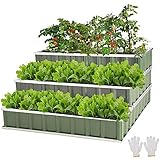 | FORTUNO 3 Tier Raised Garden Bed Metal 46.5x46.5x23.6 Inch | PrimeEligible | Check Price on Amazon |
 | ECOgardener Raised Bed Planter, 4’x4’. Outdoor Wooden Raised Garden Bed Kit Tiered Design. | PrimeEligible | Check Price on Amazon |
 | GROWNEER 3 Tier 4 x 4 x 2 Feet Dark Gray Metal Raised Garden Bed with 1 Pair of Gloves and 15 Pcs Plant Labels | PrimeEligible | Check Price on Amazon |
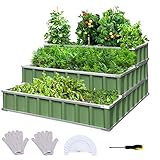 | KING BIRD 3 Tiers Raised Garden Bed 46’’x46’’x23.6’’ | Prime | Check Price on Amazon |
Maintaining Biodiversity
Biodiversity is not just a concern in large-scale ecosystems; it also matters in your container garden. Fostering a diverse garden ecosystem can enhance its resilience and contribute to a healthier environment. Here’s how to maintain biodiversity in your container garden:
Attract Pollinators
- Plant flowers that attract pollinators like bees, butterflies, and hummingbirds.
- Examples include lavender, bee balm, and native wildflowers. These visitors play a vital role in pollinating your crops.
Support Local Wildlife
- Incorporate native plants into your container garden to provide food and shelter for local wildlife.
- Birdhouses, bird feeders, and small water features can also attract a variety of creatures.
Include Herbs and Flowers
- Interplant herbs and flowering plants alongside your vegetables. This diversity can deter pests and provide nectar for beneficial insects.
- Consider including plants like dill, parsley, and marigolds in your containers.
Avoid Chemicals
- Refrain from using chemical pesticides and herbicides, as these can harm beneficial insects and disrupt the natural balance of your garden.
By creating a welcoming environment for pollinators and local wildlife, you’re not only enhancing the beauty of your container garden but also contributing to the conservation of biodiversity in your area. Your garden becomes a small but meaningful haven for creatures big and small.
Recycling and Upcycling in Container Gardening
Container gardening provides an excellent opportunity to get creative with recycling and upcycling. By giving new life to old items and repurposing materials, you can create a sustainable garden that’s both unique and environmentally friendly. Let’s explore some inspiring ideas:
Repurposed Containers
- Turn old wooden crates into charming planters with a rustic feel.
- Convert vintage tea tins or mason jars into adorable herb containers.
- Use old boots or shoes as quirky, whimsical plant pots.
Salvaged Materials
- Hunt for salvaged materials like bricks, stones, or discarded lumber to create raised beds or container garden borders.
- Reclaim pallets to build vertical gardens or shelving for your container garden.
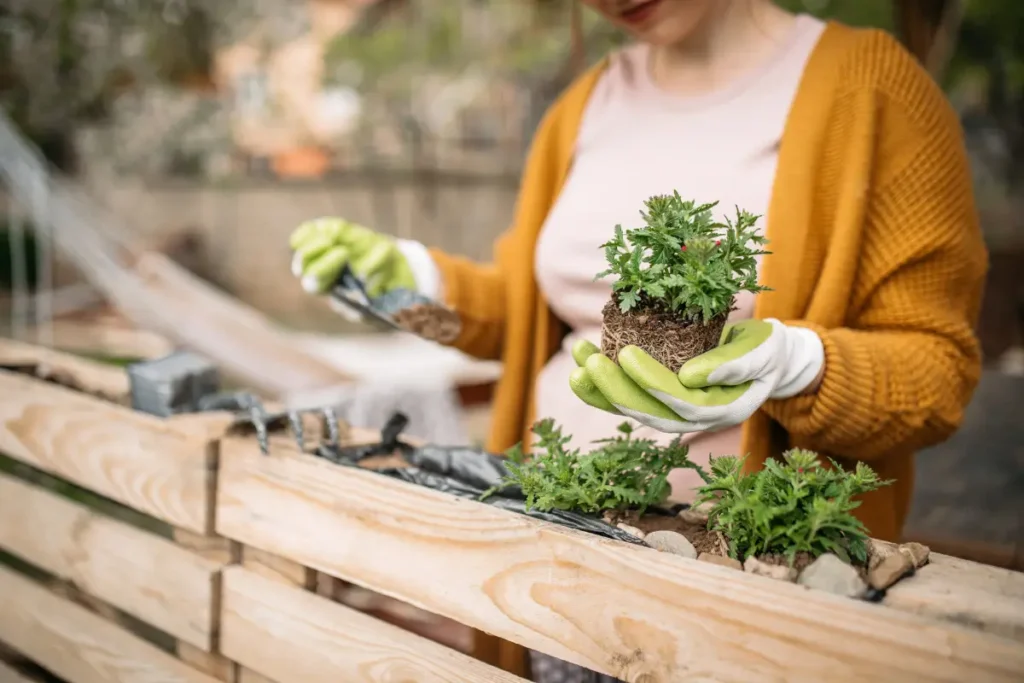
DIY Garden Decor
- Craft your own garden markers using recycled materials like wine corks, popsicle sticks, or old spoons.
- Create trellises and supports from repurposed wire fencing, bamboo stakes, or even fallen branches.
Composting
- Establish a composting system for kitchen scraps, which can be used to enrich your container garden’s soil.
- Composting not only reduces waste but also provides nutrient-rich, homemade compost for your plants.
By embracing recycling and upcycling in your container gardening endeavors, you not only reduce waste but also infuse your garden with character and charm. It’s a delightful way to make the most of available resources while nurturing your plants and the environment simultaneously. Your garden becomes a testament to the beauty of sustainable creativity.
For Further Reading
- Foodies Guide to Container Gardens
- Empty Nesters Embrace Container Gardening
- Divorcees’ Guide to Container Gardening and Self-Renewal
Final Thoughts on Sustainable Container Garden Tips
In your sustainable container garden, every choice you make has a profound impact. From eco-friendly containers to native plants and organic soil, you’ve created a space that thrives while reducing your environmental footprint. By managing pests naturally and embracing recycling, you’ve cultivated not just a garden but a sustainable ecosystem.
As you look upon your eco-warrior garden, you’re not just a gardener; you’re a steward of the Earth. Continue nurturing your green oasis, inspire others, and let your sustainable container garden be a beacon of hope for a greener, more sustainable future. Thank you for being part of the eco-conscious gardening movement, one pot at a time. Happy gardening!

Darrell has a passion for gardening that he inherited from his father. Go here to read more about the influence his father played in his love for gardening. If you want to send Darrell a quick message, then visit his contact page here.
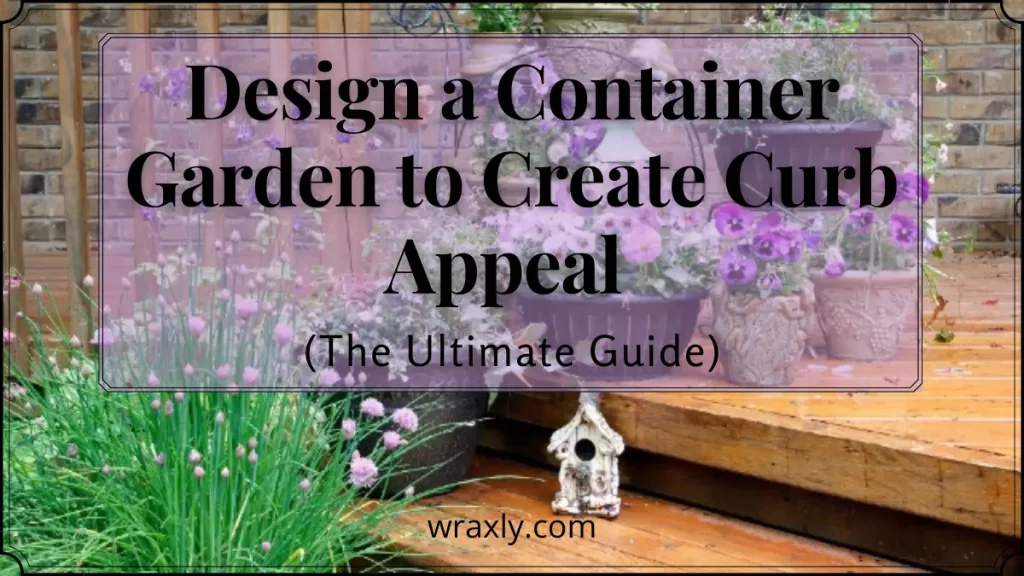
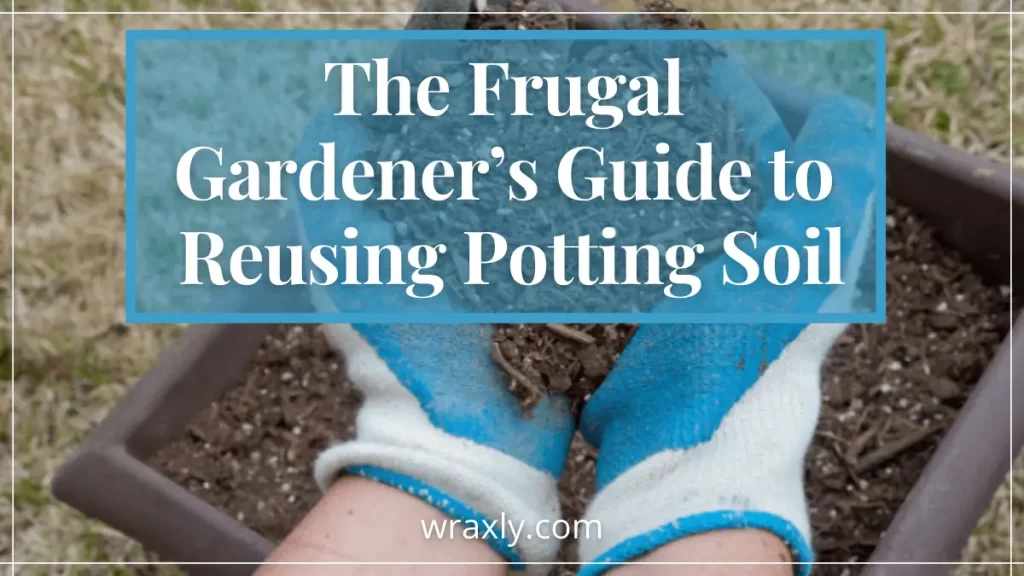
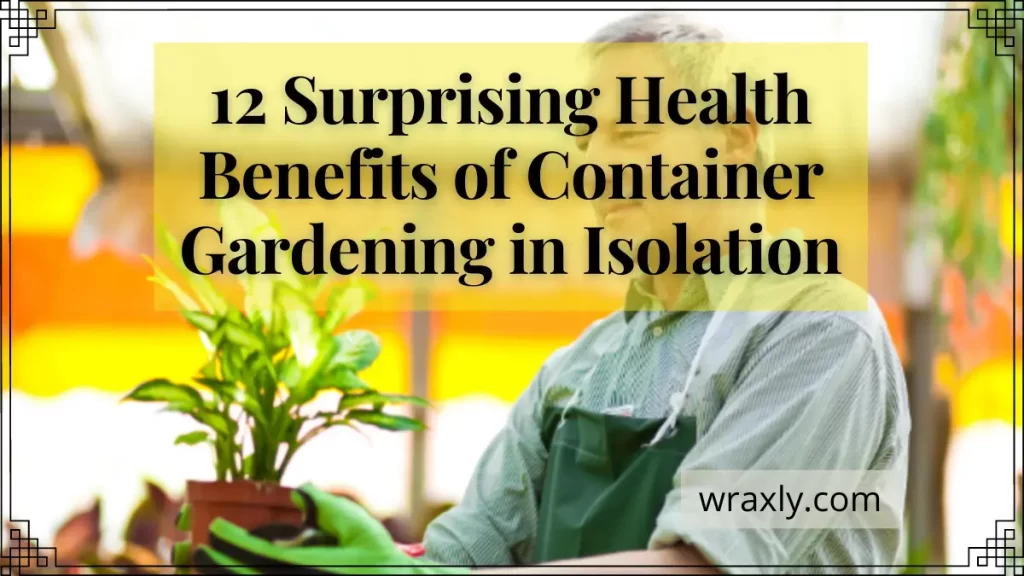
![10 Common Container Garden Mistakes to Avoid [Beginner’s Guide]](https://wraxly.com/wp-content/uploads/2021/02/10-Common-Container-Garden-Mistakes-to-Avoid-Beginners-Guide-1200-1024x576.webp)